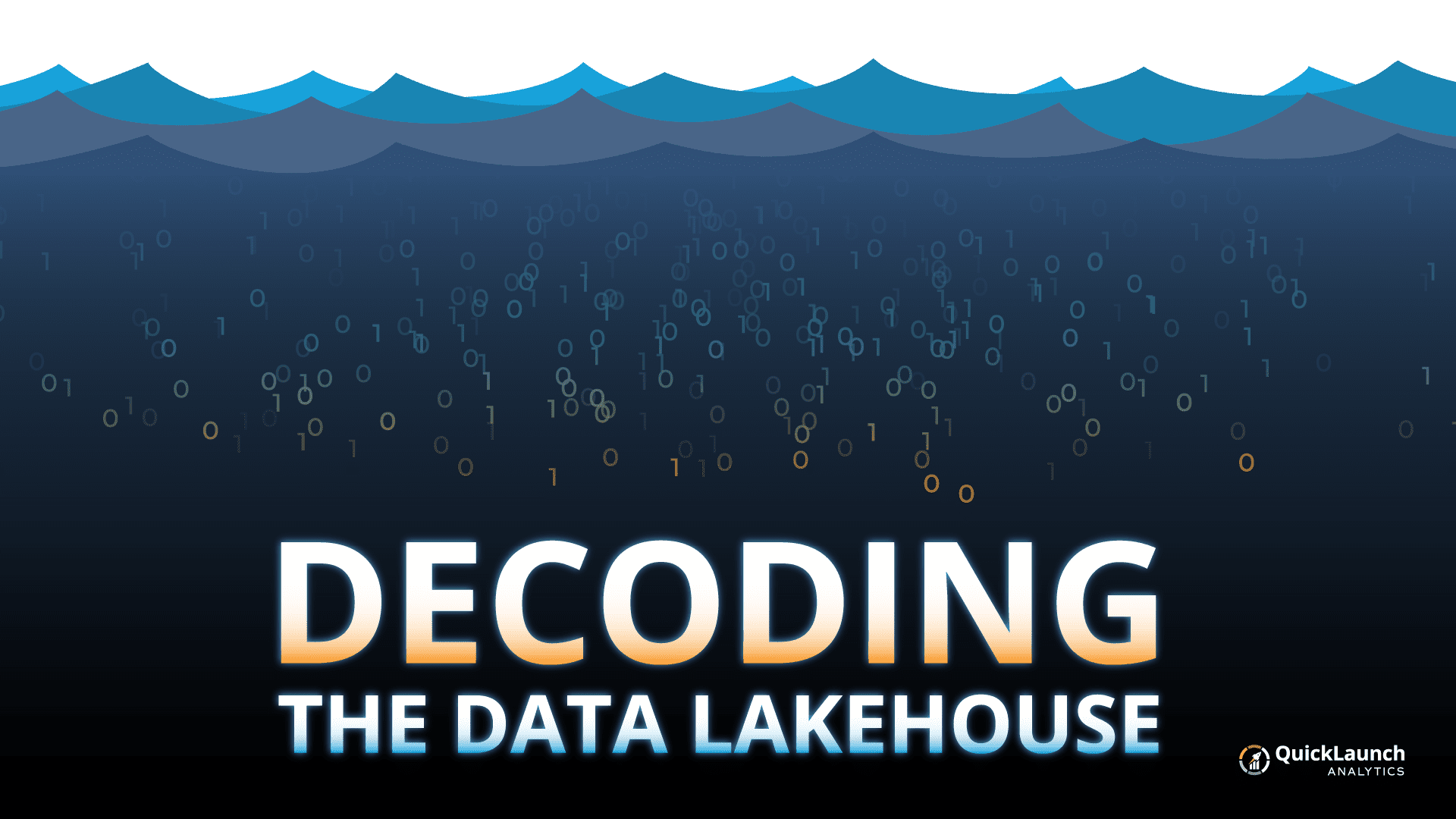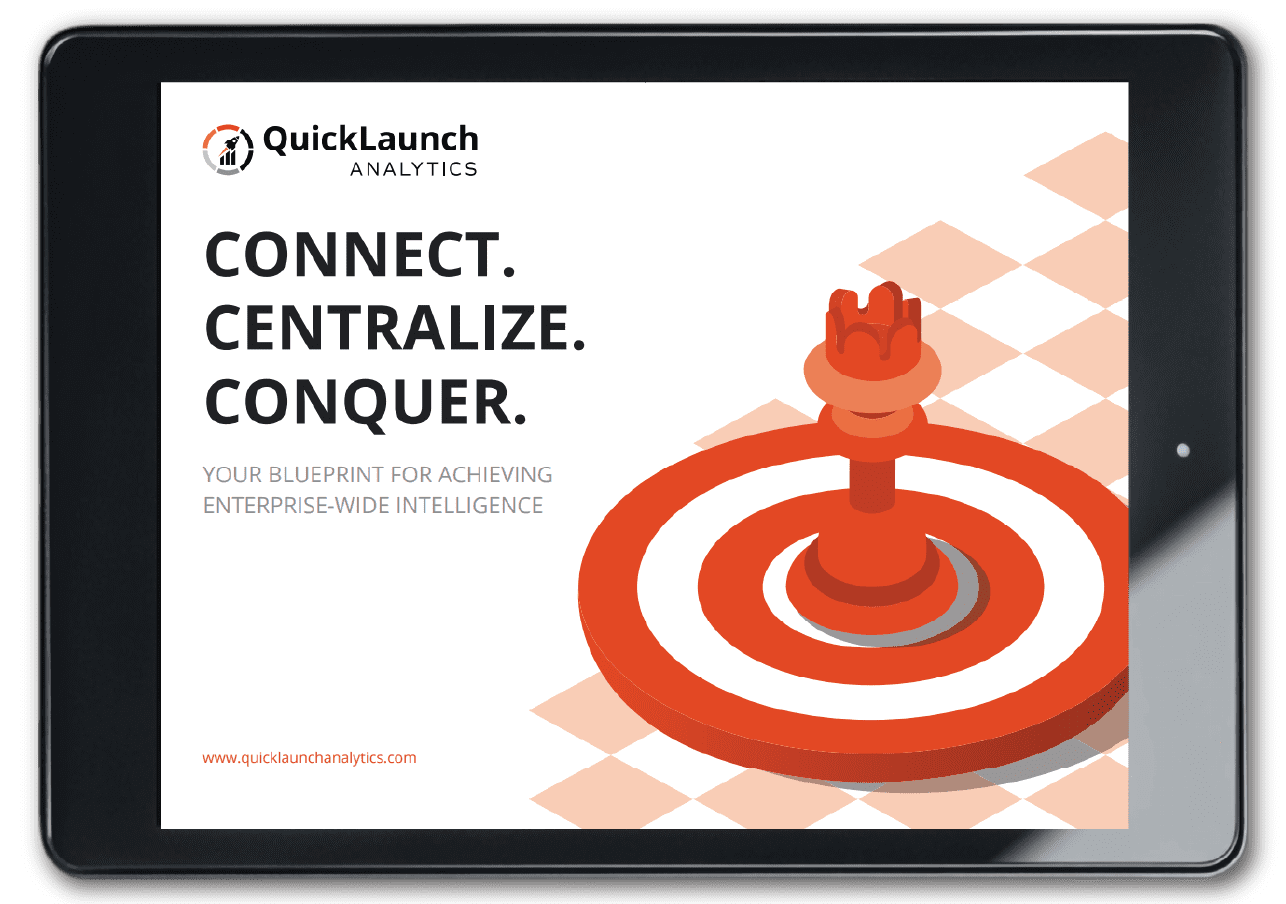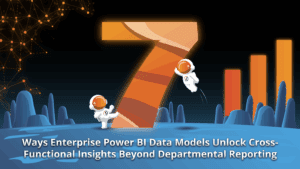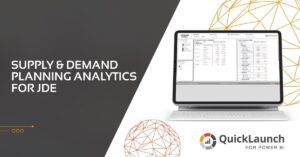
Think of a modern enterprise as a living organism. Its data is the stream of signals running through a complex digital nervous system, informing every action, reaction, and strategic move. But what happens when that nervous system is fractured? When signals from sales conflict with those from finance, and the operational core receives delayed or scrambled messages? The result is organizational paralysis—slow reflexes, poor coordination, and an inability to react intelligently to a rapidly changing environment. This systemic disconnect isn’t a failure of people but a challenge of evolution, born from a decades-long technological tug-of-war that pitted the highly reliable architecture that effectively powered traditional business intelligence against the new, flexible systems demanded by modern data and AI.
For years, organizations were forced to choose between the rigid, reliable confines of the traditional data warehouse and the vast, flexible, but often ungoverned expanse of the data lake. But a new paradigm has emerged to resolve this conflict. Enter the Data Lakehouse, a modern data architecture that is rapidly cementing its status as the indispensable foundation for any organization committed to harnessing the full power of its data. It’s not an incremental improvement; it’s a transformative approach that creates a unified platform for every data-driven ambition.
The Architectural Tug-of-War: Why We Needed a New Approach
To grasp the revolutionary nature of the data Lakehouse, it’s essential to appreciate the journey of data management. Each preceding era solved old problems while creating new ones.
The Era of the Data Warehouse
The data warehouse was the undisputed champion of business intelligence (BI). Excelling at storing structured data in a highly organized, schema-on-write model, it became the perfect engine for the financial reports and operational dashboards that businesses depend on. However, its rigidity became a significant handicap in the age of big data. The inability to handle the sheer volume and variety of modern data created a bottleneck to innovation that frustrated CIOs and data architects alike.
The Rise of the Data Lake
The explosion of big data led to the development of the data lake, a flexible, cost-effective solution for storing massive quantities of raw data in its native format in the cloud. This schema-on-read model provided unprecedented freedom for data scientists. But this freedom came at a cost. The lack of inherent structure and governance often resulted in unreliable “data swamps,” making it difficult to generate the trusted analytics businesses rely on.
The Modern Solution: A Unified Architecture
The data Lakehouse thoughtfully merges the cost-effective flexibility of a data lake with the robust governance and high-performance analytics of a data warehouse. The result is a single, hybrid architecture that creates a scalable data infrastructure for enterprises—exactly what data platform strategists have been seeking.
Comparing Data Architectures: A Clear Winner Emerges
| Feature | Data Warehouse | Data Lake | Data Lakehouse |
| Data Types | Structured Only | All Types | All Types, Unified |
| Schema | Schema-on-Write (Rigid) | Schema-on-Read (Flexible) | Hybrid, Both |
| Performance | High for BI | Variable | High for BI & AI |
| Governance | Strong | Weak / Inconsistent | Enterprise-Grade |
| AI/ML Readiness | Limited | High | Optimized |
| Cost-Efficiency | Moderate | High | Very High |
| Real-time Analytics | Limited | Limited | Natively Supported |
The Engine of a Modern Data Platform: Transactional Protocols and the Medallion Architecture
The magic of the modern data Lakehouse is enabled by open-source transactional protocols like Delta Lake or Apache Iceberg. These powerful protocols operate directly on top of your cloud storage Data Lake layer and bring a critical feature previously exclusive to data warehouses: ACID transactions (Atomicity, Consistency, Isolation, Durability). This isn’t just a technical detail; it’s the guarantee of data reliability that prevents corrupted data during concurrent operations, making your Lakehouse suitable for even the most stringent financial reporting.
To manage the flow of data from its raw state to a refined, analysis-ready format, many successful Lakehouse implementations adopt a popular and proven methodology known as the Medallion architecture. While it’s one of several effective approaches and is not a requirement, its logical structure is highly valued for progressively enhancing data quality across three distinct zones:
- Bronze Zone (Raw Layer): The initial landing zone for all source data in its original, untouched format. This creates a complete historical archive and audit trail.
- Silver Zone (Standardized Layer): Here, raw data is cleaned, validated, and conformed to consistent standards. Data from different systems is integrated, creating a reliable, queryable layer for detailed analysis.
- Gold Zone (Business Layer): The final layer contains business-focused, performance-optimized datasets. Data is aggregated into enterprise-wide KPIs, directly feeding BI dashboards and AI models with trusted information.
Choosing Your Protocol: A Closer Look at Delta Lake, Iceberg, and Hudi
While the concept of a transactional layer is central to the Lakehouse, Delta Lake is not the only option. It’s part of a vibrant ecosystem of open-source projects designed to solve the same core problem. Understanding the key players—Delta Lake, Apache Iceberg, and Apache Hudi—can help you appreciate the nuances of a Lakehouse implementation. All three add ACID transactions, time travel, and scalable metadata management to data lakes, but they do so with different architectural philosophies.
Delta Lake
Developed by Databricks, Delta Lake is built around a transaction log. Every operation that modifies data (like an insert, update, delete, or merge) is recorded as an ordered, atomic commit in this log, which is stored alongside the data files in your cloud storage. When a user queries a Delta table, the engine first consults the transaction log to find the correct version of the files to read. This design makes it highly reliable and performant, especially for streaming workloads, and is deeply integrated into the Databricks ecosystem.
- Key Strength: Its simplicity and tight integration with Apache Spark and the Databricks platform make it very easy to get started with, offering a seamless and highly optimized experience out of the box.
Apache Iceberg
Originally developed at Netflix and now an Apache Software Foundation project, Iceberg takes a different approach. Instead of a transaction log that tracks individual file changes, Iceberg uses a metadata-centric model that tracks snapshots of a table over time. Each snapshot represents the complete state of the table at a specific point in time. This design decouples the table format from the underlying file system, offering greater flexibility and performance for very large tables, as the query engine doesn’t need to list all the underlying files to understand the table’s structure.
- Key Strength: Its “schema evolution” is considered best-in-class, allowing for safe changes to a table’s structure (like adding, dropping, or renaming columns) without rewriting data files. This makes it a powerful choice for organizations with rapidly evolving data needs.
Apache Hudi
Hudi, which originated at Uber, was purpose-built for fast data ingestion and updates. It offers two primary table types: Copy-on-Write (CoW) and Merge-on-Read (MoR). Copy-on-Write is similar to Delta and Iceberg, where updates create a new version of a file. Merge-on-Read, however, is unique; it writes updates to a separate log file, which is then compacted with the base file later. This allows for extremely fast data ingestion, making Hudi a strong choice for real-time and streaming use cases where write performance is the top priority.
- Key Strength: Its flexible storage types, particularly Merge-on-Read (MoR), provide a powerful trade-off between ingestion speed and query performance, making it ideal for high-volume, real-time data pipelines.
| Feature | Delta Lake | Apache Iceberg | Apache Hudi |
| Core Design | Transaction Log | Table Snapshots | Fast Upserts & Incrementals |
| Primary Strength | Simplicity & Spark Integration | Schema Evolution & Scalability | Ingestion Speed (Streaming) |
| Concurrency | Optimistic Concurrency | Optimistic Concurrency | MVCC (Multi-Version) |
| Ecosystem | Strong (Databricks-led) | Growing (Community-led) | Growing (Community-led) |
| Best For | General-purpose BI and streaming, users seeking a seamless experience. | Massive, evolving tables and diverse query engines. | Real-time pipelines requiring the fastest data ingestion. |
Ultimately, the choice of protocol often depends on your primary use case and existing technical ecosystem. However, all three are robust, open-source solutions that successfully deliver on the core promise of the data Lakehouse: bringing reliability and performance to your data lake.
Choosing Your Platform: Tailoring the Lakehouse to Your Ecosystem
The modern data Lakehouse is a flexible architectural pattern, not a single product. It can be deployed on a variety of powerful cloud platforms, allowing you to align your choice with your existing infrastructure, technical expertise, and strategic goals.
Databricks: As the original creators of Delta Lake, Databricks offers a highly optimized and unified platform for data engineering, data science, and machine learning. Its deep integration with Apache Spark provides exceptional performance. Recognizing the importance of an open ecosystem, Databricks has also expanded its support to include Apache Iceberg, giving organizations flexibility in choosing their transactional protocol.
Microsoft Fabric: This all-in-one analytics solution seamlessly integrates everything from data movement to BI into a single, unified experience. With Power BI as its native visualization engine, it’s an ideal choice for organizations already invested in the Microsoft ecosystem. Like Databricks, Microsoft Fabric now supports both Delta Lake and Apache Iceberg, further unifying the analytics landscape.
Check out this article if you’re interested in comparing Databricks to Microsoft Fabric Lakehouse architectures.
Snowflake: While traditionally known for its cloud data warehouse, Snowflake has evolved to embrace the Lakehouse paradigm by supporting external tables and open formats. With its support for Apache Iceberg tables, Snowflake allows organizations to bring the power of its query engine and governance features directly to data stored in their own cloud storage, effectively combining the benefits of a data warehouse with the flexibility of a data lake.
Major Cloud Provider Services: The large cloud vendors offer a suite of services that can be composed to build a powerful data Lakehouse.
- Microsoft Azure offers a flexible ecosystem with several powerful options. Users can build a Lakehouse using Azure Synapse Analytics, an integrated platform that combines data warehousing and big data capabilities. For a premium, first-party Databricks experience, Azure Databricks is deeply integrated into the platform. Microsoft’s newest offering, Microsoft Fabric, presents an all-in-one SaaS solution built on a unified Lakehouse architecture called “OneLake.” These platforms typically use Azure Data Lake Storage (ADLS) Gen2 and support both Delta Lake and Apache Iceberg formats.
- AWS offers a compelling solution by combining Amazon S3 for storage, AWS Glue for the data catalog and ETL, and query engines like Amazon Athena.
- Google Cloud has consolidated its offering under BigLake, which allows you to manage and govern data across its storage and analytics services, including Google Cloud Storage and BigQuery.
NOTE: Both AWS and Google Cloud primarily leverage Apache Iceberg as their open table format.
Beyond Storage: The Three Pillars of a Modern Data Platform
A successful data Lakehouse is more than just a well-organized storage layer; it’s a complete ecosystem built on three critical pillars that manage the entire data journey.
Pillar 1: Automated Data Pipelines (Connect):
The Lakehouse relies on a constant, reliable stream of data. Modern data integration achieves this through automated pipelines that use Change Data Capture (CDC) to efficiently sync only new or updated records from source systems. This replaces error-prone manual extracts, reduces the load on operational databases, and ensures the Lakehouse always contains timely, analysis-ready data.
Pillar 2: The Data Lakehouse (Centralize):
This is the central hub where all enterprise data is stored, refined, and governed in a data Lakehouse. It thoughtfully combines the cost-effective flexibility of a data lake with the robust reliability and performance of a data warehouse, creating an ideal foundation for all current and future analytics needs.
Pillar 3: The Enterprise Semantic Model (Unify):
This is the crucial “last mile” that bridges the gap between the technical data in the Lakehouse and the business users who need to consume it. A semantic model sits on top of the Gold zone data and acts as a “digital translator” or “business map.” It relates the data tables together, pre-defines key metrics, establishes business-friendly terms for data, and enforces security rules, empowering true self-service BI by allowing users to interact with data intuitively in their tool of choice.
Read the complete blueprint on how to build a modern data architecture in our free eBook here.
From Technical Blueprint to Business Breakthrough
Adopting a data Lakehouse is a strategic business move that delivers profound and measurable value, directly impacting both your operations and your bottom line.
- Establish a Single, Trusted Source of Truth: By unifying all enterprise data into a single, governed platform, the data Lakehouse eliminates costly departmental silos. This fosters a culture of confident, data-driven decision-making where teams work from the same validated numbers to move the business forward.
- Drive Unprecedented Data Reliability and Governance: With capabilities like ACID transactions, you can trust the integrity of your data at scale. Rather than enforcing a rigid schema like a traditional warehouse, a Lakehouse manages schema evolution. This means the platform can gracefully adapt to changes in source data—like new columns or evolving data types—without breaking data pipelines, ensuring a more resilient and low-maintenance system.
- Significantly Lower Total Cost of Ownership: A Lakehouse reduces costs in two key ways. First, it leverages low-cost cloud object storage, reducing infrastructure expense. Second, and perhaps more importantly, it promotes an open ecosystem. Because Lakehouse’s use open table formats, different platforms like Databricks, Snowflake, and BigQuery can query the same copy of the data without needing to move or duplicate it. This eliminates expensive and complex data pipelines between systems, representing a massive cost and time savings for large data projects.
Future-Proofing Your Enterprise: A Unified Foundation for BI and AI
The most compelling advantage of the data Lakehouse is its unique ability to future-proof your data strategy. It is the only architecture that natively serves both traditional BI and next-generation AI workloads from a single source.
Unleashing True Self-Service BI
For BI teams, the Lakehouse provides direct, high-performance access to clean and reliable data to build enterprise semantic models from. This empowers true self-service analytics, allowing business users to explore data and create their own reports and dashboards without heavy reliance on IT or data specialists.
This modern architecture is designed for open connectivity, seamlessly integrating with the popular BI tools your teams already use, like Power BI and Tableau. Furthermore, the trend extends toward even deeper integration, as major Lakehouse providers are now developing their own native visualization layers. This creates a powerful, end-to-end analytics experience, from data ingestion to dashboard. Key examples include Microsoft’s tight coupling of Power BI with Fabric, Google Cloud’s integration of Looker, and Databricks’ own expanding suite of native BI and dashboarding capabilities.
Building the Launchpad for Artificial Intelligence
AI and machine learning models thrive on large, diverse datasets. The data Lakehouse provides the perfect, unified environment for training, testing, and deploying these models at scale. Machine learning on a Lakehouse enables sophisticated predictive models that can forecast demand, optimize supply chains, and uncover complex efficiency opportunities.
Building Organizational Readiness: The Human Element
Technology alone does not create value; people do. A Lakehouse is a catalyst for cultural change. To maximize its value, organizations must also invest in data literacy programs to ensure users can properly interpret and apply insights. Fostering cross-functional “fusion” teams that combine business domain expertise with technical data skills is also key to solving complex business problems with analytics.
From Theory to Practice: What a Lakehouse Unlocks
A unified data foundation makes previously unattainable analytics capabilities a reality across the enterprise. Here are a few use cases our customers are currently using data Lakehouse architectures for:
- Supply and Demand Intelligence: By unifying data from sales forecasts, customer orders, inventory levels, and production schedules, organizations can perform predictive shortage analysis. This transforms reactive supply chain management into proactive, strategic optimization. Read more here on how QuickLaunch enables supply and demand analysis for JD Edwards.
- Predictive Maintenance Optimization: Connecting operational data from machinery with supply availability and customer demand allows a manufacturer to schedule maintenance not just based on failure risk, but at times that cause the least disruption to the business.
- Holistic Customer Journey Analytics: Integrating data from CRM, marketing platforms, sales transactions, and customer service logs enables a true 360-degree customer view. This allows for predictive models that can anticipate customer needs, identify churn risks, and personalize experiences.
The Competitive Imperative: Act Now or Fall Behind
In an economic landscape where data is the business, operating with a fragmented and outdated architecture is no longer viable. The data Lakehouse represents a fundamental paradigm shift. By breaking down stubborn data silos, guaranteeing data quality, and creating a single, powerful launchpad for both BI and AI, the data Lakehouse has become the non-negotiable foundation for any organization that aims to out-innovate the competition.
The future of your business will be built on data; the data Lakehouse is where you’ll build it.

Your Blueprint for Achieving Enterprise-wide Intelligence
The journey form fragmented systems to enterprise-wide intelligence isn’t simple, but it’s increasingly necessary for organizations seeking to maintain competitive advantage.
- Quantify Hidden Data Costs
- Prepare for AI Readiness
- Get an Implementation Roadmap
- And More
Download our comprehensive guide, “Connect. Centralize. Conquer: Your Blueprint for Achieving Enterprise-Wide Intelligence,” and get the actionable plan you need to build a unified data foundation and drive your business into the future
Frequently Asked Questions
What is a data Lakehouse?
A data Lakehouse combines the reliability of data warehouses with the flexibility of data lakes, creating a unified platform for both business intelligence and AI while reducing cost and complexity.
How does a Lakehouse improve decision-making?
By centralizing all data, it eliminates conflicting reports and ensures all teams work from the same trusted dataset, enabling faster, more confident strategic decisions.
What’s the difference between a data Lakehouse, warehouse, and lake?
This can be confusing because the term “data warehouse” has evolved. Here’s a breakdown of the three architectures:
- Data Lake: A cost-effective storage repository that holds vast amounts of raw, unstructured, and structured data. It’s highly flexible and ideal for data science, but it typically lacks the governance and transactional reliability needed for enterprise BI.
- Traditional Data Warehouse: This refers to the classic architecture (e.g., SQL Server, Oracle) that excels at storing structured, refined data for business intelligence. It is highly reliable and performant for BI but is not designed to handle the variety and volume of modern data required for AI/ML workloads.
- Data Lakehouse: This is the modern architecture that combines the strengths of the other two. It uses a data lake for low-cost, flexible storage of all data types and adds a transactional layer (like Delta Lake or Iceberg) on top to provide the reliability, governance, and performance of a data warehouse. It is the only architecture that natively supports both enterprise-grade BI and AI/ML on the same copy of the data.
What are the best tools for building a Lakehouse?
Leading platforms include Databricks, Microsoft Fabric, AWS (S3 + Glue + Redshift), and Google Cloud (Cloud Storage + Dataproc + BigQuery). The choice depends on your existing ecosystem and expertise.
How long does it take to implement a Lakehouse solution?
The implementation timeline depends heavily on the approach you take.
- Building a Custom Solution: If an organization chooses to build a custom Lakehouse from scratch, the process is a significant undertaking. This path involves extensive custom data modeling, building data pipelines from the ground up, and designing all governance and analytics layers. In this scenario, seeing initial, meaningful business value often takes 9-12 months, with a comprehensive enterprise-wide implementation typically taking 1 to 2 years.
- Using an Accelerator like QuickLaunch: By leveraging a proven framework that includes pre-built connectors, enterprise-grade data models, and a ready-to-use Power BI analytics layer, the timeline is dramatically compressed. With this accelerated approach, organizations can move from fragmented data to actionable intelligence in just 8 to 12 weeks, a 70% reduction in time compared to traditional approaches.



